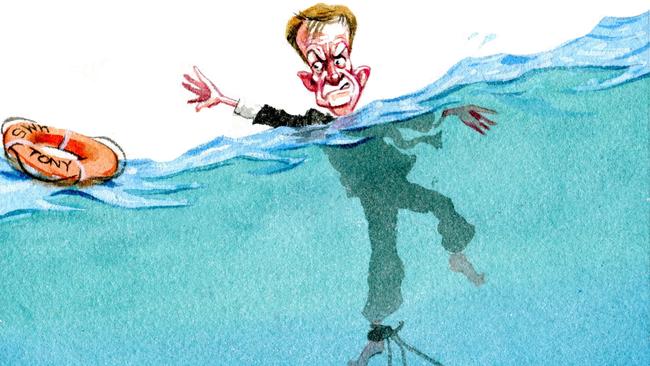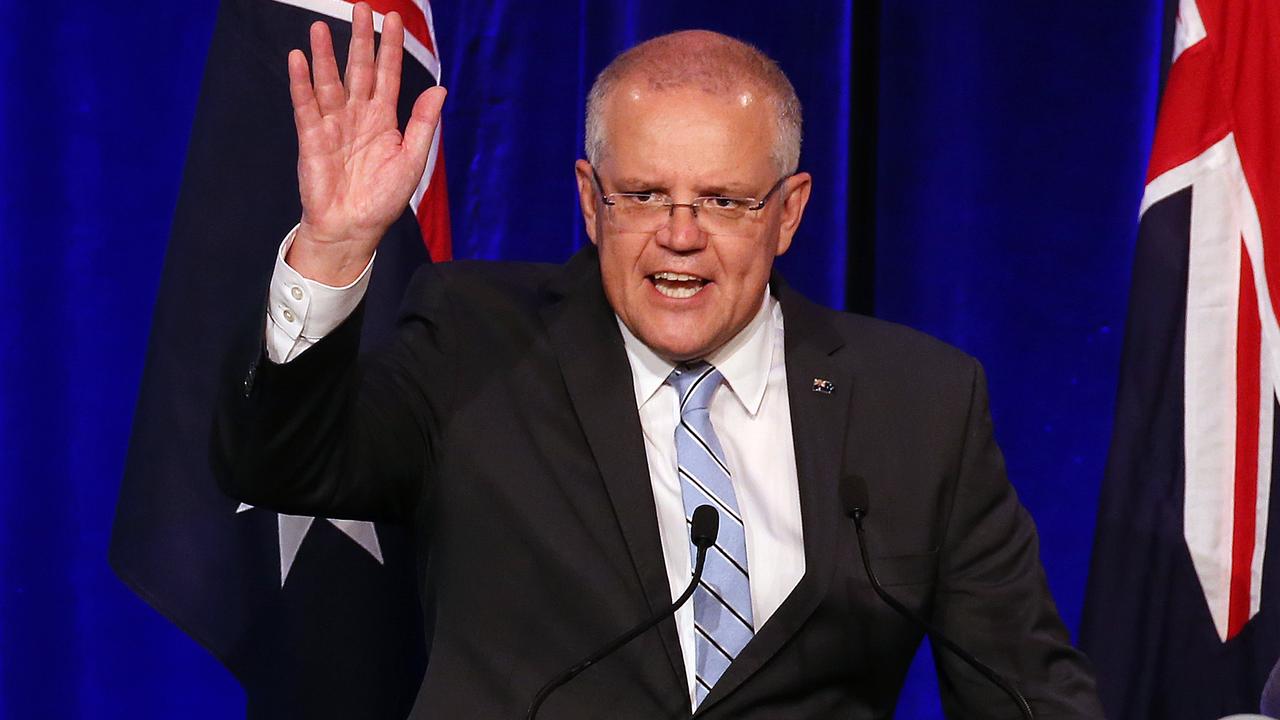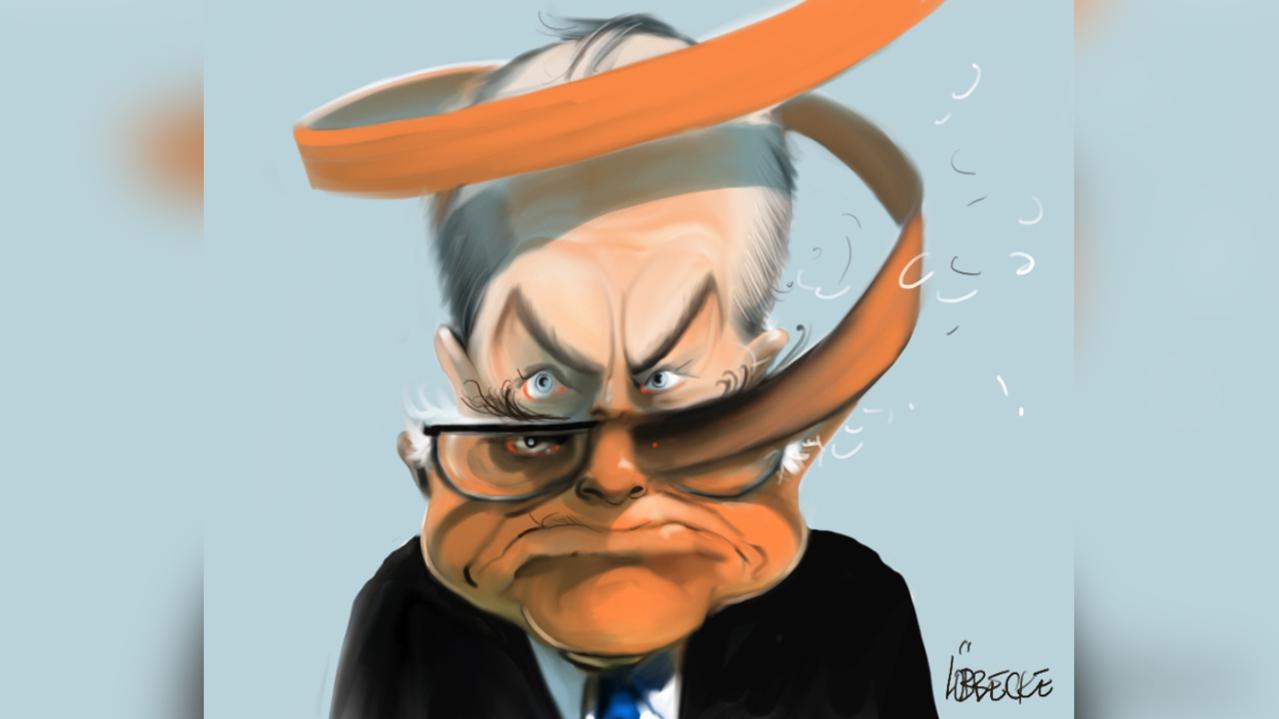
As 2016 approaches, Bill Shorten’s achilles heel becomes more and more apparent: he is the last surviving frontline player from a depressing and dysfunctional period in Australian politics.
If you had to name the big four whose roles were at centrestage during Labor’s six years in office, the two prime ministers and the man who would become PM are the standouts: Kevin Rudd, Julia Gillard and Tony Abbott.
Coming in at No 4 is Shorten — only a junior frontbencher during Rudd’s first stint as PM but the key figure who marshalled support away from the popular first-term prime minister in a late-night coup that changed the way modern leaders need to think about their political mortality.
Again in 2013, long after Gillard’s popularity had collapsed, it was Shorten’s switch back to Rudd that delivered the ousted PM the numbers he needed to win back the poisoned chalice of the Labor leadership before leading the party to a bitter defeat a few months later.
While Abbott’s personal unpopularity was on show during the Rudd-Gillard years, courtesy of the job he did on his Labor opponents (negative politicking doesn’t endear opposition leaders to the voting public but it can be effective), it took time for Shorten’s unpopularity to manifest itself.
But we can trace the origins of his broken bond with the people to the role he played in bringing down Rudd and Gillard. An early indication of that unpopularity was on display in the Labor leadership showdown soon after the 2013 defeat. The new system of letting members have their say saw 60 per cent of members cast a ballot for Anthony Albanese, who was seen to have played a much straighter bat than Shorten during the years of Labor division.
Shorten succeeded in winning the Labor leadership only for the same reason he was successful at tearing down previous Labor prime ministers — his control of the numbers in the partyroom. The votes from the members was an early sign of how the wider public would come to see Shorten.
Australians are a forgiving lot. Soon after his elevation to the prime ministership the always unpopular Abbott was given a reset, with the first Newspoll registering a positive net satisfaction rating. It quickly fell away as the combative style and broken promises reminded voters why they didn’t like Abbott in the first place.
In the case of Shorten, his numbers were never great, but just how bad they would become was masked by an even more unpopular PM. With Abbott gone, Shorten is the last surviving central figure from those years of dysfunction.
Wayne Swan was arguably the fifth main player, given he was treasurer and for a time deputy PM. But even if we add him to the list, it serves only to prove the point that Shorten is an unwanted reminder from an era in Australian politics voters would rather forget, for Swan is a backbencher, just like Abbott.
How can Shorten overcome the dead weights strapped to his ankles as he seeks to stay afloat politically? The unfortunate answer for him is that there isn’t much he can do to help himself. Even if Shorten seeks to damage his opponent, Malcolm Turnbull, doing so will only eventuate by mimicking Abbott’s style in opposition. It’s a strategy of mutually assured destruction. With Turnbull so far out in front, Shorten probably can’t rely on negative politicking to save himself.
The passive reality for the Opposition Leader is that his best chance of recovery is for the Prime Minister’s fortunes to fade because of problems on his own side of the parliament. In other words, Shorten’s destiny is out of his own hands. The backroom operator who determined the destiny of two Labor PMs with his command of caucus numbers, not to mention neatly exposing Abbott’s penchant for deception, has lost the power to determine his own destiny. He will rise or fall at the hands of the decisions Turnbull makes.
All is perhaps not lost for Shorten, in that there is plenty going on at the moment which risks dividing the Coalition. Ian Macfarlane’s attempt to defect to the Nationals has damaged relations between the Coalition parties.
The conservatives, while not pining for a return to Abbott, are flexing their policy muscle, particularly over how to handle the threat of Islamic extremism. And Turnbull’s response so far has been anything but sure-handed.
The Mal Brough saga doesn’t look like going away, and Labor will continue to pursue the Special Minister of State when parliament resumes next year.
Throw in the need for a tax reform debate, as well as more spending cuts in the May budget, and Turnbull’s honeymoon looks set to end, irrespective of how Shorten performs.
The worry for Team Shorten surely must be that despite all the difficulties Turnbull must face up to, his role in tearing down a PM has not wounded him in the same way the Labor years ruined the big four. That simply may be because the person he tore down was one of the big four.
In fact, Shorten’s ability to maintain moderately acceptable personal numbers despite his vicious attacks on Abbott also may have been because he was targeting one of the big four.
The transaction costs for Turnbull in politically executing a first-term PM have been remarkably (and perhaps surprisingly) limited. Only one group of people feels especially aggrieved about what happened to Abbott: a large chunk of party members, especially in NSW, and a small band of conservative commentators.
But in a voting structure that requires compulsory preferencing, what is this relatively small band of not so merry men and women to do? They won’t be able to bring themselves to vote for Shorten and the Labor Party, you can count on that. And they can’t exhaust their preferences before they distribute to Team Turnbull. Not at the federal level.
Which is why the centre ground matters in Australian politics. Turnbull is playing to it, and his right flank doesn’t like it. Shorten lost the centre the moment he moved against Rudd because the centre had yet to wake up to why Rudd was so unlikable.
By the time Shorten moved on Gillard, it mattered not that he was playing a hand in saving the furniture ahead of polling day. Voters had already made up their minds what they thought about the way Shorten did business.
Overcoming such sentiments is much harder for the Opposition Leader now he hasn’t got Abbott to kick around any more.
Peter van Onselen is a professor at the University of Western Australia.



